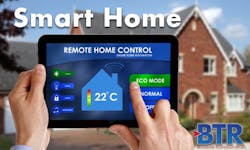According to Parks Associates, adoption of connected point solutions and the advent of smart speakers will drive demand for platforms to coordinate and centralize control of smart home products and capabilities in U.S. households.
"The percentage of U.S. broadband households highly familiar with smart home platforms increased across all platforms from the end of 2017 to the end of 2018," said Chris O'Dell, research associate, Parks Associates. "Amazon Alexa and Google Assistant saw the biggest jumps of all listed platforms, so voice control is a key factor in driving consumer interest in the smart home and the adoption of multiple devices per household."
The research house says that as device adoption continues to increase each year, smart home platforms will help establish order out of the chaos that comes from the steady influx of connected devices in consumers' homes. According to Parks research, 28% of U.S. broadband households now own at least one smart home device, and device-owning households own an average of six devices.
"Companies competing in the smart home ecosystem can leverage platforms to provide a reliable, interoperable ecosystem with a simplified user experience and deliver expanded value through enhanced features such as cloud intelligence and data privacy and security," O'Dell said.
When implementing a smart home ecosystem in their home, consumers care less about name brands of key devices and more about a seamless experience where all devices in the ecosystem work together smoothly. Consumer preferences favor vertically aligned players, such as Comcast and Vivint Smart Home, which have introduced their own branded devices to optimize the experience on their platforms while also maximizing profits.





